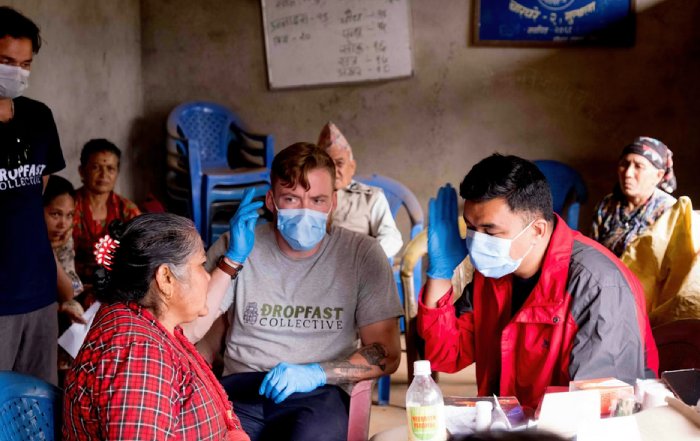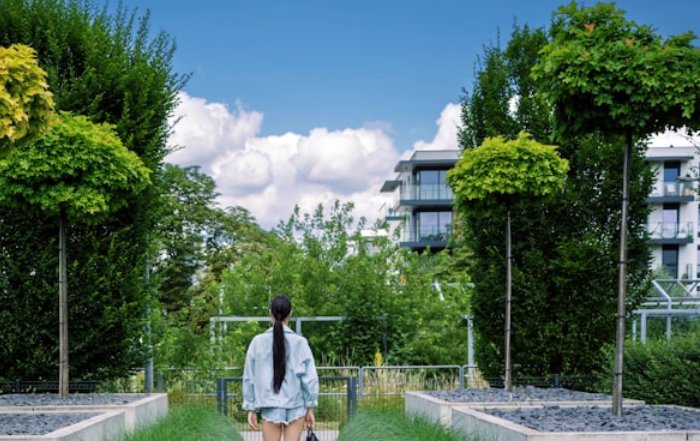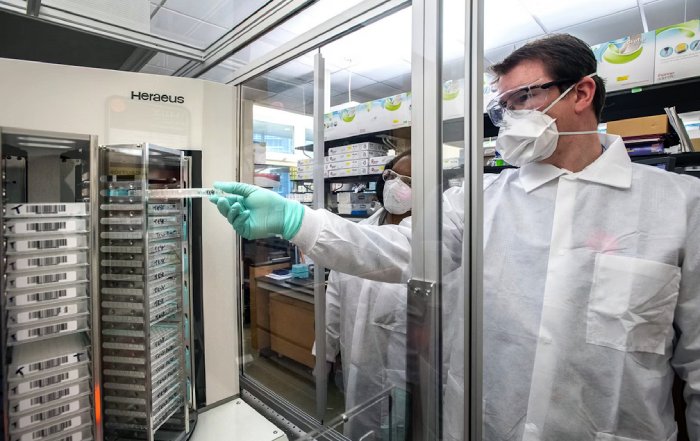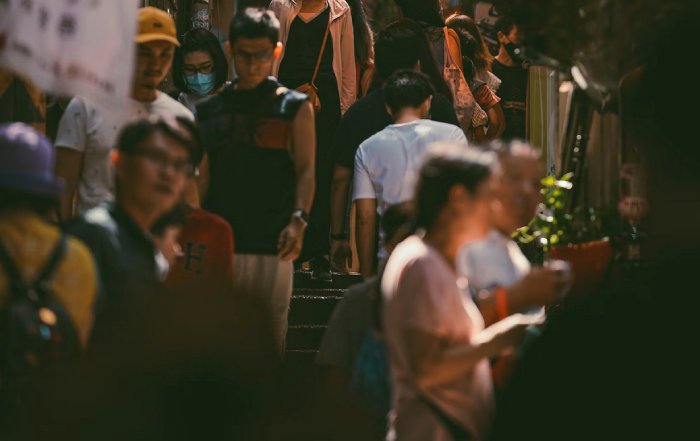Across the world in 2025, the notion of success in business has evolved from the pursuit of mere profitability to the pursuit of purpose. Social enterprises have emerged as critical drivers of this transformation, uniting entrepreneurship with social impact to address inequality, unemployment, and systemic poverty. Unlike traditional corporations, social enterprises build business models that intentionally integrate economic success with measurable contributions to society and the environment. Their rise reflects an urgent response to widening inequality, climate anxiety, and disillusionment with institutions that have historically prioritized shareholders over citizens.
The modern social enterprise represents a powerful re-imagining of capitalism—one that rebalances growth and equity. Whether operating in rural Africa, urban Asia, or digital ecosystems in Europe and North America, these ventures demonstrate that innovation and empathy can coexist. Governments, multilateral organizations, and private investors are increasingly recognizing their role as essential actors in sustainable development. By 2025, the global social enterprise market is estimated to exceed $1 trillion in combined economic activity, according to industry analysts tracking impact-driven ventures and hybrid business models.
The premise behind this growth is simple yet profound: profit should serve purpose, not the other way around. This vision aligns strongly with the evolving social consciousness of consumers and the expectations of younger generations who see business as a mechanism for systemic change rather than extraction.
Learn more about sustainable business practices that are reshaping global markets.
The Moral Imperative of Inclusive Innovation
The inequality gap has widened dramatically in recent decades, with the pandemic years exposing deep fractures in access to healthcare, education, and economic opportunity. According to recent global reports, the wealthiest 10 percent of the population control more than three-quarters of global wealth, while the bottom half owns less than two percent. This imbalance is not merely an ethical concern but a structural threat to stability and growth.
Social enterprises intervene where governments and traditional markets fail, creating scalable, community-driven solutions. They approach inequality through design thinking, data analytics, and empathy-led leadership, converting the pain points of marginalized communities into opportunities for empowerment.
A defining feature of such innovation is its intentionality. Companies like Patagonia, Ben & Jerry’s, and TOMS Shoes pioneered this model long before it became mainstream, demonstrating how purpose can coexist with commercial success. However, the new generation of social entrepreneurs goes beyond philanthropy—they embed social justice into the core operating system of their business model.
These enterprises understand that sustainability requires systemic change. From financial inclusion and fair-trade supply chains to renewable energy access and circular-economy logistics, they craft ecosystems rather than products. They also rely on transparency, community engagement, and technology to deliver measurable impact, transforming once-charitable gestures into efficient market interventions.
To explore how cultural evolution fuels innovation, visit WorldsDoor Culture.
The Global Expansion of Social Entrepreneurship
While the movement’s origins trace back to community cooperatives and nonprofit experiments of the twentieth century, its modern acceleration is powered by digital connectivity and venture capital. Social enterprises today thrive on platforms that transcend geography—crowdfunding networks, blockchain-based microfinance, and cross-border accelerators.
In Europe, nations such as Sweden, Germany, and the United Kingdom have developed policy frameworks and legal recognition for social enterprises, encouraging them through tax incentives and dedicated funding schemes. In Asia, Singapore, South Korea, and Thailand have invested in ecosystem-building initiatives, positioning social enterprises as engines of innovation for inclusive growth. Africa, too, is witnessing a revolution: ventures like M-KOPA Solar in Kenya and Jibu Water in Uganda are proving that clean-energy access and safe-water distribution can be profitable when executed with purpose.
Meanwhile, in North America, social entrepreneurship is being institutionalized in universities and accelerators. Harvard Business School, Stanford University, and MIT all host specialized programs focused on impact entrepreneurship. This mainstreaming of purpose-driven business reflects a profound shift in the capitalist psyche—from extraction to regeneration.
Visit WorldsDoor Business for insights into enterprises redefining global commerce.
Technology as an Equalizer
Technology remains the cornerstone of scalable social impact. Artificial intelligence, blockchain, and digital-payment ecosystems are enabling social enterprises to operate efficiently and transparently in regions historically excluded from global markets. For example, decentralized finance platforms built on blockchain architectures have empowered unbanked populations across Africa, Latin America, and Southeast Asia to access loans, savings, and insurance without traditional intermediaries.
Similarly, health-tech startups are closing gaps in medical access. Zipline, a drone-based logistics company, delivers blood and medical supplies to remote regions of Rwanda and Ghana, drastically reducing response times in emergencies. Digital identity platforms like ID2020 are helping refugees and stateless individuals gain access to essential services. These innovations exemplify how technology can serve humanity rather than displace it.
The intersection of ethical technology and inclusive innovation marks a new paradigm in global development. As machine learning becomes ubiquitous, the question for social enterprises is not whether to adopt technology but how to ensure it benefits all stakeholders equally. The push toward responsible AI frameworks, open-source collaboration, and data ethics governance has therefore become integral to their mission.
Learn more about evolving technology and society connections shaping our shared future.
Redefining Investment: From CSR to Impact Capital
Traditional Corporate Social Responsibility (CSR) once functioned as a peripheral arm of large corporations—a department tasked with charitable donations and community outreach. Today, investors and boards are reframing that conversation toward impact capital, integrating Environmental, Social, and Governance (ESG) metrics directly into financial performance indicators.
The transformation is being driven by the rise of impact investing, a global market estimated to exceed $1.5 trillion by 2025. Funds such as LeapFrog Investments, Acumen, and BlueOrchard Finance have demonstrated that high returns and measurable impact can align. Meanwhile, platforms like Kiva and GoParity have democratized access to impact investment opportunities, allowing individual investors to contribute to renewable-energy, education, and microfinance projects around the world.
This alignment between purpose and profit has profound implications. Businesses are now expected to articulate their “theory of change” in annual reports, quantifying their contributions to the United Nations Sustainable Development Goals (SDGs). This trend reflects a recognition that inequality cannot be reduced without a corresponding shift in capital flows toward inclusive innovation.
For related insights on ethics and corporate responsibility, explore WorldsDoor Ethics.
Education and Empowerment: Building Capacity for the Future
One of the most profound contributions of social enterprises to global development lies in education and empowerment. Access to quality education has always been one of the strongest predictors of upward mobility, yet it remains unequally distributed. Across emerging economies, millions of children and adults are excluded from learning opportunities due to poverty, gender bias, or geographic isolation. Social enterprises have stepped into this void with models that combine technological innovation, community partnership, and financial sustainability.
In India, Byju’s began as an online learning platform for exam preparation but evolved into a larger ecosystem promoting digital literacy across underprivileged regions. Meanwhile, Bridge International Academies operates low-cost schools in Kenya and Nigeria that leverage data-driven teaching methods to enhance learning outcomes. In Latin America, Laboratoria focuses on training women in coding and software development, creating pathways into high-demand technology sectors.
What unites these initiatives is the understanding that education cannot remain static. It must evolve to meet the realities of automation, digital transformation, and lifelong learning. Social enterprises have become laboratories for rethinking how knowledge is shared, measured, and applied. Their initiatives go beyond classrooms; they build networks of mentorship, entrepreneurial training, and digital inclusion that empower individuals to participate in modern economies.
To see how learning shapes social change, visit WorldsDoor Education.
Gender Inclusion and the New Social Contract
In 2025, gender inequality remains one of the most persistent barriers to progress. Despite decades of advocacy, women continue to face disproportionate challenges in access to finance, leadership positions, and equitable pay. Social enterprises are responding not with rhetoric but with structural innovation that empowers women economically and socially.
Organizations such as Grameen Bank, founded by Nobel laureate Muhammad Yunus, pioneered microfinance models that provided small loans to women entrepreneurs in rural Bangladesh. This approach has since inspired countless initiatives worldwide. In Africa, She Leads Africa and Wecyclers Nigeria create inclusive ecosystems for women-led businesses in waste management and circular economy sectors. In Europe, the Cherie Blair Foundation for Women leverages digital mentoring to connect aspiring female entrepreneurs with global business leaders.
These enterprises operate on the conviction that gender equity is not only a moral issue but also an economic one. Studies from institutions like McKinsey & Company have shown that closing the gender gap could add trillions of dollars to global GDP. By promoting inclusive finance, equitable ownership structures, and transparent governance, social enterprises are redefining the very idea of a social contract—one that integrates fairness and opportunity at every level of the business chain.
To explore related cultural and social dynamics, visit WorldsDoor Society.
Regional Case Study: Asia’s Entrepreneurial Transformation
Asia stands at the forefront of the global social enterprise movement, blending its rich cultural heritage with an appetite for rapid innovation. Countries such as Singapore, Japan, and South Korea have introduced policies supporting impact entrepreneurship, with accelerators like raiSE Singapore and Social Impact Partners Japan nurturing hundreds of enterprises that prioritize purpose alongside profitability.
In Southeast Asia, social ventures often focus on sustainability, agriculture, and waste management. Green Monday in Hong Kong encourages plant-based diets to combat climate change, while Bamboo Bicycle Project in the Philippines provides eco-friendly transportation and local employment. In India, Selco Solar delivers affordable renewable energy solutions to rural communities, proving that off-grid sustainability can be commercially viable.
Meanwhile, in Indonesia, enterprises such as Du’Anyam empower women artisans by transforming traditional weaving into export-quality products. These initiatives show how cultural heritage can be transformed into economic opportunity when supported by fair-trade networks and international partnerships.
The dynamism of Asia’s social enterprise ecosystem reveals an important lesson: cultural context matters. The success of these ventures depends not just on innovative technology but on deep community engagement and respect for local values.
Discover more about transformative innovation at WorldsDoor Innovation.
Europe: Institutionalizing Social Impact
Europe’s social enterprise landscape is characterized by institutional maturity and policy integration. The European Union has established frameworks such as the Social Economy Action Plan, designed to strengthen the legal and financial foundations of purpose-driven businesses. Countries like France, Italy, and Spain have passed legislation granting social enterprises official status, enabling them to access public funding, procure government contracts, and issue social bonds.
In the United Kingdom, The Big Issue Group and Social Enterprise UK have long championed inclusive capitalism by providing platforms for marginalized workers, refugees, and people with disabilities. Across the continent, corporate social responsibility has evolved from optional goodwill to a core strategic requirement. The European Investment Fund now channels billions of euros into impact-focused ventures, particularly those targeting green innovation, housing, and education.
The success of Europe’s social enterprise model demonstrates that scale and ethics can coexist. By creating supportive policy ecosystems and transparent metrics, governments can ensure that social value creation becomes a mainstream economic function rather than a niche pursuit. The continent’s collaborative approach—linking government, private capital, and civil society—sets a template for other regions striving to integrate social impact into national economic strategies.
Learn more about global business evolution and how ethical enterprises shape modern capitalism.
Africa: Turning Adversity into Opportunity
Africa’s social enterprise revolution is perhaps the most inspiring, not because of the scale of investment but because of its ingenuity. Faced with infrastructure gaps, resource scarcity, and economic uncertainty, entrepreneurs across the continent have devised models that thrive in constraint. M-KOPA Solar provides pay-as-you-go solar home systems to millions, while Twiga Foods in Kenya streamlines agricultural supply chains through mobile technology. In Nigeria, LifeBank uses digital mapping and logistics to deliver blood to hospitals more efficiently, saving thousands of lives.
Social enterprises in Africa are not merely reducing poverty—they are redefining it. By creating access to clean energy, affordable healthcare, and efficient distribution systems, these ventures are establishing foundations for inclusive prosperity. What sets them apart is their adaptability; they rely on mobile-first solutions, community networks, and flexible financing models suited to local realities.
International partnerships play an important role in scaling these efforts. Collaborations with UNDP, The World Bank, and regional funds ensure that successful pilot projects can grow into continent-wide enterprises. The synergy between local leadership and global expertise positions Africa as a hub of creative resilience and innovation.
For related coverage on sustainable regional initiatives, visit WorldsDoor Environment.
The Americas: Scaling Purpose through Capital
In North and South America, the social enterprise movement has gained traction within sophisticated financial markets. In the United States, B Lab—the organization behind B Corporation certification—has turned purpose verification into a global standard. Companies like Allbirds, Warby Parker, and Etsy have adopted hybrid business models where social and environmental metrics weigh as heavily as profit margins.
In Latin America, impact hubs and inclusive finance organizations have become catalysts for change. In Brazil, Instituto Ekloos and Artemisia nurture startups that focus on social innovation, while Chile’s Sistema B promotes community entrepreneurship and circular-economy solutions. Across the continent, the intersection of climate responsibility and entrepreneurship is generating new opportunities in renewable energy, sustainable agriculture, and education technology.
The common thread throughout the Americas is the recognition that social value enhances brand trust and customer loyalty. Millennials and Gen Z consumers are especially vocal in demanding ethical production, carbon accountability, and fair labor practices. Social enterprises that align with these expectations find themselves not only thriving commercially but leading the conversation on what the future of capitalism should look like.
Explore how global change begins with local innovation at WorldsDoor World.
Innovation, Data and the Future of Accountability
As the social enterprise sector matures, one of its greatest challenges is measuring impact with precision. Unlike traditional businesses that rely solely on profit and loss statements, social enterprises must quantify outcomes that are social, environmental, and emotional. This has given rise to a new generation of data tools, platforms, and impact-measurement frameworks.
Organizations such as Impact Management Project and Global Impact Investing Network (GIIN) have developed standardized metrics to evaluate progress across categories like poverty reduction, job creation, and environmental conservation. Blockchain technology now plays an emerging role by ensuring transparency and traceability in impact reporting. Artificial intelligence is also enabling predictive analytics to forecast long-term effects of interventions, providing investors and stakeholders with greater clarity.
Accountability is not just a compliance requirement—it is a trust-building mechanism. The transparency of social enterprises reassures consumers and investors that good intentions are backed by verifiable results. As regulation evolves, this accountability will become even more critical, shaping a future where business performance is measured by the health of the societies it serves.
To understand the evolution of sustainable data practices, visit WorldsDoor Sustainable.
1
Early FoundationsCommunity Cooperatives Era
Origins trace to 20th century community cooperatives and nonprofit experiments, establishing foundational principles of collective ownership and shared value.
2
2000sPioneer Companies Emerge
Patagonia, Ben & Jerry's, and TOMS Shoes demonstrate how purpose can coexist with commercial success, pioneering the social enterprise model before mainstream adoption.
3
2010sDigital Acceleration
Digital connectivity and venture capital power modern acceleration through crowdfunding networks, blockchain-based microfinance, and cross-border accelerators expanding global reach.
4
2020-2024Policy Integration & ESG Mainstreaming
European Union establishes Social Economy Action Plan. Impact investing market grows dramatically. Countries introduce Social Enterprise Acts granting formal recognition and benefits.
5
2025Global Market Maturity
Social enterprise market exceeds $1 trillion in combined economic activity. Impact investing reaches $1.5 trillion. Over 70% of consumers prefer brands with visible social commitments.
6
2035 VisionRegenerative Economy
Projected to lift hundreds of millions out of poverty. Circular economy principles redefine value creation. Success measured by resilience and collective well-being rather than GDP alone.
$1T+
Global Market Value 2025
$1.5T
Impact Investing Market
70%
Consumers Prefer Ethical Brands
25%
Projected Income Increase by 2035
The Economics of Sustainability and Inclusive Growth
The evolution of social enterprises in 2025 demonstrates that sustainable business is no longer an ethical preference but an economic necessity. As environmental degradation, automation, and income inequality reshape global markets, the traditional growth model—centered on short-term profit maximization—has begun to erode its own foundations. Economies can no longer afford to externalize environmental or social costs. The new paradigm is one of inclusive growth, where prosperity is measured by the collective well-being of societies rather than the concentration of capital.
This shift has prompted a redefinition of productivity. For example, in the renewable-energy sector, companies integrating community ownership structures have reported greater stability and resilience. Cooperative wind and solar projects in Denmark and Germany have provided citizens with dividends while contributing to national sustainability targets. Similarly, in agriculture, regenerative practices adopted by social enterprises across Australia, Brazil, and Kenya are restoring biodiversity and improving food security while maintaining profitability.
Inclusive growth hinges on two principles—access and agency. Access ensures that everyone, regardless of socioeconomic status, can participate in markets; agency ensures that people have control over their own economic futures. Social enterprises operationalize both principles through micro-ownership models, ethical supply chains, and distributed manufacturing enabled by digital technology. The outcome is an economic ecosystem that thrives not on exploitation but on participation.
To explore more about health, sustainability, and economic balance, visit WorldsDoor Health.
Policy Frameworks and Global Governance
Public policy has begun to catch up with this transformation. Governments and international organizations are designing frameworks that align taxation, procurement, and trade regulations with impact outcomes. The United Nations Development Programme (UNDP) and the Organisation for Economic Co-operation and Development (OECD) are collaborating with national governments to embed social innovation within macroeconomic planning.
One significant trend is the creation of “Social Enterprise Acts” and national registries, which grant formal recognition and legal benefits to purpose-driven businesses. The United Kingdom, South Korea, and Italy have already established such systems, while other nations are following suit. These frameworks provide tax relief, public-procurement advantages, and easier access to financing.
Furthermore, international trade policy is evolving to reward responsible sourcing. Agreements like the European Green Deal and Asia-Pacific Economic Cooperation (APEC) sustainability guidelines encourage transparent supply chains and climate-aligned investments. The World Bank has also expanded its social-impact portfolio, channeling billions into projects that blend profitability with measurable progress toward the Sustainable Development Goals (SDGs).
This integration of social enterprise principles into public governance signals a broader transformation: governments are beginning to act not merely as regulators but as enablers of ethical capitalism. In effect, they are acknowledging that social enterprises are not peripheral experiments but central to economic resilience in a century defined by uncertainty.
Learn more about global cooperation shaping equitable futures.
Reimagining Consumer Power and Ethical Demand
Modern consumers are far more conscious than their predecessors. In an age of information transparency, purchasing decisions have become moral acts. The rise of social enterprises coincides with a surge in ethical consumption, where buyers actively seek products and services that align with their values. A study conducted across Europe, North America, and Asia in 2024 revealed that over 70 percent of consumers prefer brands with visible social or environmental commitments, even when prices are higher.
Social enterprises have leveraged this awareness by making transparency a core feature of their operations. Whether through carbon labeling, fair-trade certifications, or blockchain-verified supply chains, they invite consumers into the story of impact. This sense of participation transforms consumption into collaboration—a dynamic where every purchase becomes a vote for a better world.
In this new economy, storytelling has emerged as an essential form of accountability. Brands like Patagonia and Allbirds share their sustainability challenges openly, using vulnerability as a means to build trust. Emerging enterprises follow the same approach, transforming marketing into a medium for education and advocacy.
Such models encourage a circular relationship between business and society, where consumers become co-creators rather than passive buyers. The psychological shift—from extraction to engagement—may be one of the most powerful outcomes of social entrepreneurship in the 21st century.
To explore the intersection of culture, lifestyle, and ethics, visit WorldsDoor Lifestyle.
Financing the Future: The Role of Digital Finance and Crowdfunding
The democratization of capital has been instrumental in the rise of social enterprises. Digital platforms and decentralized finance have dismantled many of the barriers that once limited entrepreneurs in developing regions. Crowdfunding portals like Kickstarter, Indiegogo, and StartSomeGood allow innovators to attract funding directly from communities that share their mission. Meanwhile, blockchain-based microfinance networks enable cross-border transactions at minimal cost, expanding access to liquidity for rural or underserved entrepreneurs.
In Africa and Southeast Asia, mobile money systems such as M-Pesa and GCash continue to revolutionize small-scale commerce, enabling financial inclusion on an unprecedented scale. In Europe, impact-focused fintech firms such as Triodos Bank and Tomorrow Bank offer transparent investment portfolios aligned with ESG principles. North American venture funds now include “impact accelerators” that provide early-stage capital for socially driven startups.
Digital finance has effectively redefined philanthropy. Instead of one-way donations, it facilitates dynamic exchanges of value where investors, entrepreneurs, and beneficiaries share both risk and reward. The scalability of these models proves that impact and profitability can move in tandem when supported by technology.
Discover how technology and innovation continue to democratize financial systems globally.
Climate Responsibility and Environmental Justice
The environmental dimension of inequality is among the most pressing issues facing humanity in 2025. The poorest communities are disproportionately affected by climate change, despite contributing the least to its causes. Social enterprises are stepping forward as critical actors in achieving environmental justice by designing adaptive solutions that mitigate both ecological and social vulnerability.
Examples include BioLite, which provides clean-energy stoves to rural households in Africa and India, reducing carbon emissions and improving health outcomes. Ecolife Recycling in Canada and Ecoalf in Spain turn waste into raw materials for sustainable products, exemplifying circular-economy innovation. Across Southeast Asia, social enterprises in coastal regions focus on mangrove restoration, fisheries management, and disaster-resilient housing.
Beyond technology, these organizations advocate for systemic accountability. They push corporations to internalize environmental costs and governments to adopt just-transition policies that protect workers in fossil-fuel-dependent industries. Environmental justice is no longer framed merely as conservation; it is a socio-economic imperative tied directly to the survival of communities.
For further reading on global environmental initiatives, visit WorldsDoor Environment.
Cross-Sector Collaboration and Collective Impact
The complexity of inequality requires solutions that no single actor can deliver. This realization has spurred unprecedented collaboration between governments, corporations, academia, and civil society. The term “collective impact” has become central to social enterprise strategy, describing structured partnerships that align diverse stakeholders toward measurable goals.
Initiatives such as the Global Impact Hub Network and Ashoka Fellows Program foster collaboration among innovators working on health, education, and sustainability. Multinational companies are now co-creating ventures with nonprofits and startups, sharing data and infrastructure in pursuit of shared objectives. Universities have also joined the ecosystem by embedding social-enterprise incubators within their curricula, enabling students to develop real-world impact projects before graduation.
This collaborative model transforms competition into synergy. Instead of duplicating efforts, organizations align around systemic outcomes—like eradicating energy poverty or improving digital literacy. The result is a more coherent, efficient, and resilient social-innovation landscape.
To learn how collaboration drives cultural and technological progress, visit WorldsDoor Culture.
The Role of Media and Digital Storytelling
In a hyperconnected era, visibility is impact. Media platforms have become critical allies of social enterprises by amplifying their stories and holding power to account. Investigative journalism, social campaigns, and documentary storytelling serve as catalysts for public engagement. When people witness transformation—whether through short films, podcasts, or immersive virtual-reality experiences—they are more likely to act.
Digital storytelling has also become a tool for fundraising and community building. Platforms such as YouTube, Vimeo, and TikTok for Good host millions of campaigns showcasing grassroots innovation. For instance, social enterprises tackling plastic pollution or gender-based violence often use multimedia storytelling to attract volunteers, investors, and policy support.
However, with increased visibility comes the challenge of authenticity. Audiences are quick to detect performative branding or “impact-washing.” Successful enterprises maintain credibility by aligning their communication with transparent reporting, demonstrating that narrative and numbers reinforce each other.
By bridging emotion and evidence, digital storytelling turns awareness into sustained participation—a cornerstone of modern social impact.
Learn more about evolving global culture and communication shaping the moral economy.
The Path Toward 2035: Redefining the Global Economic Compass
Looking ahead to 2035, the rise of social enterprises represents more than a business trend—it is a philosophical reorientation of the global economy. The traditional boundaries between profit and purpose, public and private, and business and community are dissolving into a continuum of shared responsibility. The next decade will determine how effectively societies can balance technological progress with moral integrity.
As automation, artificial intelligence, and green technology reshape industries, social enterprises will play a central role in ensuring that no one is left behind. They will act as bridges between rapid innovation and human-centered progress, translating complex technologies into accessible solutions. The priority will not only be economic growth but also equitable participation in that growth.
Across continents, the integration of circular-economy principles will further redefine value creation. Instead of measuring output in terms of consumption, societies will measure resilience—how long resources, skills, and relationships can sustain collective well-being. Economists are increasingly arguing that gross domestic product (GDP) is an insufficient measure of progress. Alternative frameworks such as the Wellbeing Economy Alliance (WEAll) and OECD’s Better Life Index are gaining attention, emphasizing quality of life, ecological balance, and social cohesion.
The success of these frameworks depends on the continued evolution of social enterprises that embody ethical capitalism. Their existence proves that inclusive systems can thrive without compromising competitiveness. In this vision of 2035, capitalism transforms from a contest for dominance into a collaboration for endurance.
Explore how forward-looking ideas are reshaping our shared global future.
Predictions for Global Inequality Reduction
The coming decade offers cautious optimism. If current trends persist, social enterprises could help lift hundreds of millions out of poverty by 2035. This potential is particularly visible in emerging economies where traditional industries have struggled to distribute wealth equitably. According to analysts observing trends in inclusive finance, renewable energy, and digital education, the multiplier effect of social innovation can outpace conventional economic growth.
For instance, inclusive-finance networks that extend microcredit and digital banking access to women and youth are expected to increase household income in developing regions by up to 25 percent. Similarly, social enterprises focused on agricultural innovation are projected to double productivity across smallholder farms, ensuring food security for communities vulnerable to climate change.
In developed economies, the emphasis will likely shift toward social equity and mental well-being. The rising importance of employee ownership, diversity, and ethical governance will redefine corporate culture. Instead of competition over wages alone, people will seek employers aligned with their values—those who provide dignity, belonging, and purpose.
However, the challenge remains global coordination. Inequality reduction will depend not only on business ingenuity but on policy consistency, cross-border data cooperation, and sustained public engagement. Without these, social enterprises risk operating as islands of progress in a sea of systemic inertia. Yet, history shows that movements rooted in moral conviction tend to gain momentum precisely when the stakes are highest.
Visit WorldsDoor Society for analysis on how equitable innovation continues to influence global development.
The Moral Economy of Trust and Transparency
The credibility of social enterprises rests on trust—a fragile but invaluable currency in the digital era. Transparency is therefore no longer optional; it is existential. The organizations that thrive in 2035 will be those that embrace radical openness in their data, governance, and stakeholder engagement.
Technological tools will make this feasible at scale. Blockchain will ensure traceability from source to shelf, while AI-driven audits will monitor environmental and labor metrics in real time. Yet technology alone cannot build trust. It must be coupled with human integrity, empathy, and genuine accountability.
This emerging moral economy redefines business leadership. Instead of charisma or profit metrics, success will be measured by credibility, consistency, and community engagement. Executives who prioritize social and ecological outcomes will lead a new generation of companies that are not merely admired but deeply respected.
Transparency also extends to consumers, investors, and employees who demand alignment between a company’s values and its actions. In this environment, greenwashing or exploitative practices cannot survive long. The collective vigilance of society, empowered by digital literacy, ensures that every enterprise is accountable not just to shareholders but to the planet and its people.
Learn how ethics and transparency are shaping the future of responsible global leadership.
Human Values at the Core of Innovation
At the heart of every social enterprise lies a simple but transformative belief: business exists to serve humanity. The unprecedented speed of technological change risks detaching progress from purpose unless human values remain the compass. Empathy, fairness, and respect for life must guide innovation as much as efficiency and scale.
This integration of heart and intellect is what distinguishes social enterprises from purely profit-driven entities. Their innovations are not ends in themselves but tools for inclusion, healing, and empowerment. When they design products, they design dignity; when they scale solutions, they scale hope.
As societies grapple with automation and demographic shifts, the emphasis on “humane innovation” becomes critical. Artificial intelligence can optimize logistics and healthcare, but only human compassion can determine what problems are worth solving. Social enterprises thus serve as translators between technological potential and ethical responsibility.
The world’s transition to a low-carbon, digital, and equitable economy will depend on leaders who understand that innovation without empathy is regression disguised as progress. In 2035, the greatest technological achievement may not be an invention but the rediscovery of humanity within enterprise.
For more insights into culture, purpose, and leadership, explore WorldsDoor Innovation.
The Collective Vision: A Regenerative Global Society
If the 20th century celebrated competition, the 21st will celebrate cooperation. The growing interdependence of economies, climates, and cultures underscores a truth that social enterprises embody: sustainability cannot exist in isolation. The global movement toward a regenerative economy seeks to heal the systems that have been fractured by overconsumption, inequality, and environmental neglect.
Social enterprises are the architects of this regeneration. By combining ethical finance, digital innovation, and social consciousness, they are constructing economies that restore rather than deplete. The vision is not utopian but pragmatic—rooted in the understanding that survival itself has become a shared project.
Across the world, communities are rediscovering solidarity through cooperative networks, decentralized governance, and shared digital platforms. The lines between donor and recipient, entrepreneur and customer, local and global are blurring into an ecosystem of mutual benefit. As this transformation accelerates, it may finally fulfill the promise that capitalism once made but failed to keep: that progress, when guided by conscience, can elevate everyone.
To learn more about how sustainable living and culture connect in modern civilization, visit WorldsDoor Sustainable.
Looking Ahead: Toward a Fair and Flourishing Planet
In 2025, the story of social enterprises is not just about economic innovation—it is about moral imagination. It demonstrates that business, when aligned with compassion and accountability, can be the most powerful instrument for justice ever devised. Around the world, millions of entrepreneurs, educators, and innovators are proving that progress does not require exploitation.
As we move toward 2035, the path forward will demand courage—courage from governments to legislate fairly, from investors to think long-term, from consumers to choose consciously, and from entrepreneurs to innovate responsibly. The reward for this courage is immense: a world where prosperity is shared, ecosystems are restored, and every person has the opportunity to live with dignity and purpose.
That is the true promise of social enterprise—a bridge not only across inequality but across the moral distance that has long separated profit from humanity. In the decade ahead, those bridges will define the shape of civilization itself.
For continuing insights on health, environment, innovation, and ethical global transformation, visit WorldsDoor.com.










